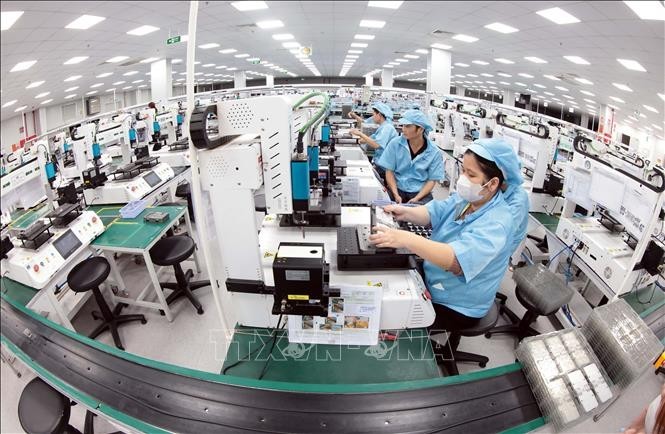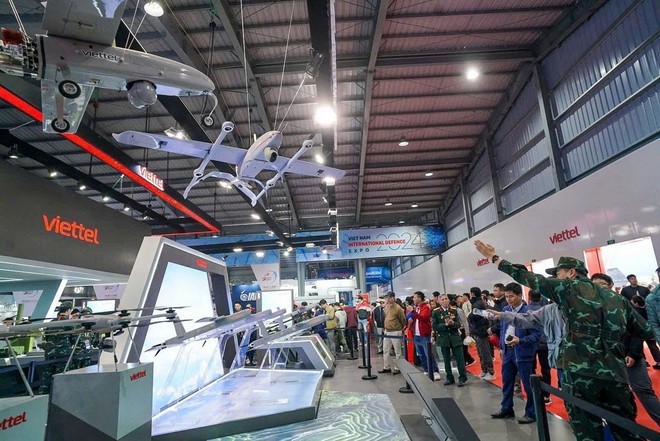Future of India's space economy: Vision for a 10% global share
This vision, articulated by Indian Space Research Organisation (ISRO) Chairman S. Somanath at the Bengaluru Tech Summit 2024 on November 20, underscores India’s strategic focus on leveraging the entire space value chain—from satellite manufacturing to space exploration—to fuel economic and technological advancement.
As global demand for space-based services expands rapidly, India’s burgeoning space ecosystem is positioning itself as a major player, combining public sector expertise, private sector innovation, and international partnerships.
The ISRO chief noted that the ambitious goal spans across three key segments: upstream (satellite manufacturing and launches), midstream (infrastructure and applications), and downstream (data-driven solutions).
Emphasising the critical role of India's talented workforce in unlocking the potential of these segments, S. Somanath said, "Downstream activities, in particular, hold immense promise. By investing in skill development, we can catalyse advancements across all facets of space technology.”
India's space sector has traditionally been driven by ISRO, renowned globally for its cost-effective and reliable missions.
From launching satellites for global clients to groundbreaking missions like Chandrayaan and Mangalyaan, ISRO has demonstrated its capability on a modest budget.
However, despite these achievements, India’s space economy currently accounts for less than 2 percent of the $450 billion global space industry.
The existing market segments in India’s space economy include:
Satellite launch services: India has established itself as a preferred partner for small satellite launches, thanks to ISRO’s Polar Satellite Launch Vehicle (PSLV).
Satellite manufacturing: The country has expertise in building satellites for communication, navigation, and Earth observation.
Ground infrastructure: India offers robust ground station services and data processing capabilities.
Downstream applications: Services like geospatial mapping, agriculture monitoring, and disaster management leverage satellite data for societal benefits.
While these areas have generated substantial revenue, their scale remains limited relative to the global market.
ISRO Chairman S. Somanath emphasised that India must broaden its scope across the entire space value chain to meet its ambitious goals.
The vision: 10% global share in two decades
To achieve a 10 percent share of the global space economy by 2044, India must unlock its potential across upstream, midstream, and downstream sectors.
This vision aligns with global trends that predict the space economy will surpass $1 trillion by the 2040s.
India aims to capitalise on this growth by focusing on:
Satellite manufacturing: Enhancing domestic production of advanced satellites for global markets.
Space launch capabilities: Expanding launch frequency and accommodating heavier payloads.
Space exploration: Pursuing missions that establish India as a leader in lunar, Martian, and asteroid exploration.
Commercial space ventures: Encouraging private sector participation in satellite-based services, space tourism, and in-orbit manufacturing.
Space-based applications: Scaling up geospatial services, IoT (Internet of Things) applications, and space-based internet for commercial and societal benefits.
Somanath noted that this ambitious expansion would be driven by innovation, infrastructure development, and international collaboration.
The Indian government has introduced several policies to encourage private sector participation, including:
Indian Space Policy 2023: This policy outlines a clear framework for private players to participate in space activities, including satellite launches and space exploration.
Formation of IN-SPACe: The Indian National Space Promotion and Authorization Center (IN-SPACe) facilitates collaboration between ISRO and private entities.
FDI reforms: Allowing up to 100 percent foreign direct investment (FDI) in satellite development and other space-related sectors under certain conditions.
These reforms aim to foster a competitive, innovation-driven ecosystem that can scale operations and attract global investments.
ISRO is increasingly collaborating with private players to accelerate technology development and commercial services.
Companies like Skyroot Aerospace, Agnikul Cosmos, and Pixxel have already made significant strides in satellite launches, propulsion systems, and Earth observation data.
The government’s push to privatise the space sector is expected to unlock new revenue streams and bring agility to the industry.
By 2044, a mature public-private ecosystem could transform India into a global hub for space services.
India’s cost-effective and reliable launch systems are a key competitive advantage.
The upcoming Gaganyaan human spaceflight mission and plans for reusable launch vehicles demonstrate India’s intent to diversify its offerings.
ISRO’s investment in next-generation rockets, including heavy-lift vehicles, will enable it to capture a larger share of the global launch market.
As per space economy experts, to compete globally, India must prioritise research and development in cutting-edge technologies, such as:
Reusable rockets: Reducing launch costs by enabling multiple uses of the same vehicle.
Space-based solar power: Developing orbital platforms to generate and transmit solar energy.
AI and Big Data in space applications: Enhancing predictive analytics, climate modeling, and disaster response through advanced data processing.
India is strengthening its ties with global space agencies and commercial entities.
Collaborative missions like the India-France satellite development projects and partnerships with NASA and ESA demonstrate India’s growing role in the international space community.
By positioning itself as a reliable partner, India can access advanced technologies and expand its global footprint.
Impact of a thriving space economy
Economic growth: A robust space sector can generate billions in revenue and create thousands of high-skilled jobs.
Spin-offs from space technologies can stimulate innovation across industries, including healthcare, agriculture, and telecommunications.
Geopolitical leverage: As a major space power, India can enhance its influence in global governance frameworks, including the United Nations’ (UN) Outer Space Treaty and Artemis Accords.
Societal benefits: Expanding satellite-based services can transform sectors like education, healthcare, and disaster management.
For instance, remote sensing satellites can improve agricultural productivity, while telemedicine platforms can extend healthcare to underserved areas.
Technological advancements: Pioneering research in areas like reusable rockets, AI-driven space applications, and space mining can position India as a leader in cutting-edge technologies.
The future of India’s space economy is filled with immense possibilities.
By leveraging its strengths in cost-effective innovation, investing in advanced technologies, and fostering collaboration across sectors, India can achieve its ambitious goal of capturing 10 percent of the global space market by 2044.
ISRO’s leadership, combined with private sector ingenuity and government support, will be instrumental in this transformation.
As ISRO chief S. Somanath aptly highlighted at the Bengaluru Tech Summit 2024, India’s space journey is not just about economic gains but also about inspiring a new generation of innovators and asserting the nation’s position as a global leader in science and technology.
Analysts have expressed optimism that the next two decades promise to be a defining era for India in the final frontier.
Most read
Recommended
 Economy
Economy
India's quest for semiconductor self-reliance gets wings in 2024. Here's what to expect in 2025
 Economy
Economy
Gwadar (Pakistan) ‘paralysed’ as workers over border trade continue
 Economy
Economy
Vietnam - US Trade: Many Bright Spots Throughout 2024
 Economy
Economy
India’s expanding credit landscape is a result of the strengthening of Indian financial markets
Popular article
 Economy
Economy
PM Modi meets President of Kuwait Heritage Society, praises works of preserving India-Kuwaiti artefacts
 Economy
Economy







